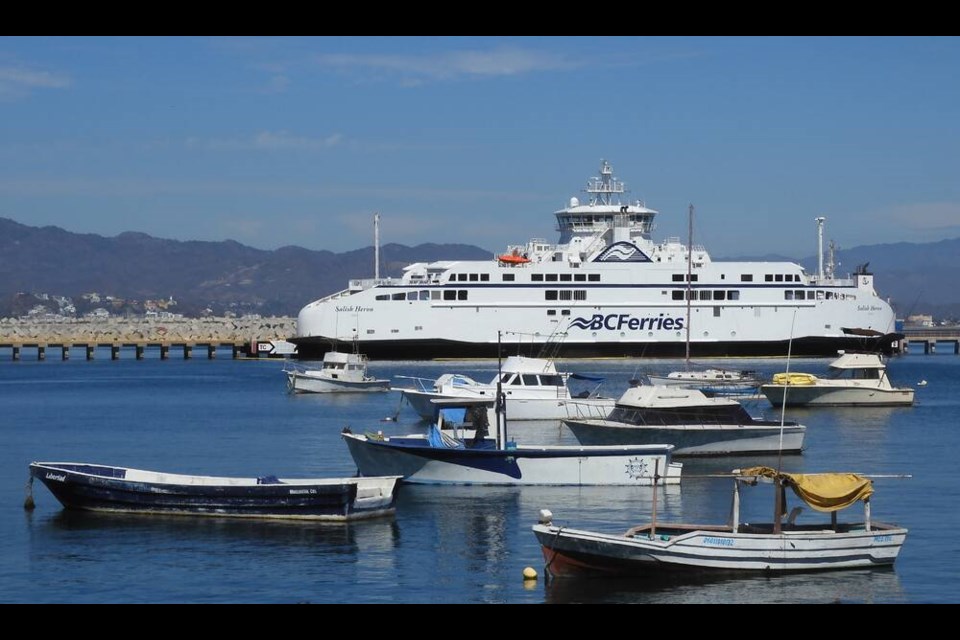When John Chalmers heard that B.C. Ferries' Salish Heron was in port in Manzanillo, Mexico, he couldn’t resist driving 40 minutes to see it and take photographs for his blog.
“When I learned there was a new brand-new B.C. ferry [in port], I just had to see it with my own eyes,” the Edmonton resident said Tuesday from Manzanillo, where he and wife, Linda, vacation every winter.
The couple has a condominium about 40 minutes outside Manzanillo.
The ferry, en route between Gdansk, Poland, and Victoria, was tied up at the port where cruise ships dock in the city, on Mexico’s west coast. “It looked beautiful to me,” Chalmers said.
The vessel, which left Poland on Dec. 22, resumed its trip on Monday after stocking up on fuel, fresh water and provisions. Depending on the weather, it could be in Victoria on Feb. 24.
By the time it arrives, it will have travelled more than 10,000 nautical miles.
Chalmers, who writes a blog about life in Mexico that’s emailed to about 300 readers, said he was impressed by the fact that a car-carrying ferry made such a long journey.
The Salish Heron is the fourth and final Salish-class vessel built for B.C. Ferries. Like the three others built before it, the vessel crossed the Atlantic Ocean and transited through the Panama Canal before heading to its new home base in B.C.
All Salish-class vessels were built by Remontowa Shipbuilding S.A. in Gdansk. The Salish Heron will serve the southern Gulf Islands, including routes between Swartz Bay and Pender, Saturna, Mayne and Galiano islands, beginning this summer.
Salish-class ferries are powered by liquified natural gas, with a hull design that creates a very small wake, while the electric propulsion and structural design ensure a quiet ride, according to B.C. Ferries. Each Salish ferry is 351 feet long and can carry up to 138 vehicles and 600 passengers and crew.



